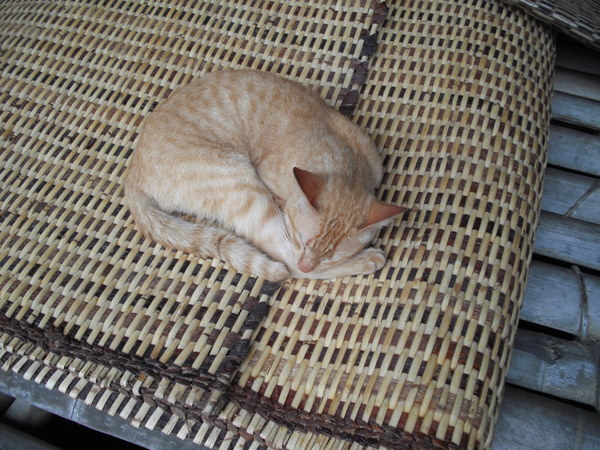Sarawak – Daily life among the ex-headhunters
OK, I mentioned headhunting for the sheer exploitive sensationalism of the word. The people we met in the traditional village were charming, hospitable, gentle peaceful folks, and their English was meticulous. They had some skulls in a basket in the meeting house, but no skulls were newer than 60-70 years, as far as I could tell. In the old days tribesmen demonstrated their aptitude for marriage(!) by killing someone and bringing home his denuded head, while tribeswomen showed off their weaving skills. Weaving still is a treasured craft; headhunting, not so much since about 1830 (exceptions being made in 1942, when the rajah encouraged folks to hunt Japanese heads).
We went to the Anna Rais longhouse, which is about an hour’s drive from Kuching, to see how life is lived among modern Dayaks. The Dayaks of Sarawak belong to three main categories: Sea Dayaks who live at the confluence of rivers and the South China Sea, and earn a living by fishing; the River Dayaks, who cultivate rice inland (along rivers), and the Upriver Dayaks, who live at high altitude by hunting, farming and foraging. The people at Anna Rais are River Dayaks. They grow rice and pepper, the indigo the need to dye fibers blue for their weaving, eggplants, okra, and somewhat surprisingly, cacao.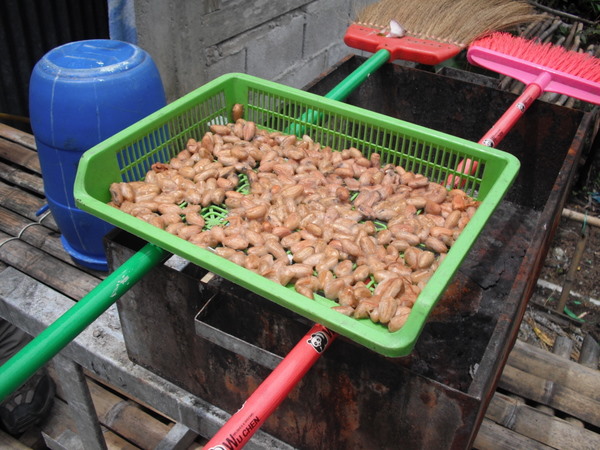 These are cacao beans drying before being roasted and ground into chocolate. I never realized how much they resemble silkworm or other coccoons.
These are cacao beans drying before being roasted and ground into chocolate. I never realized how much they resemble silkworm or other coccoons.
The longhouse has floors in its public areas made of cross-layered bamboo. The cat is optional. These floors get relaid every year, and are tied into place.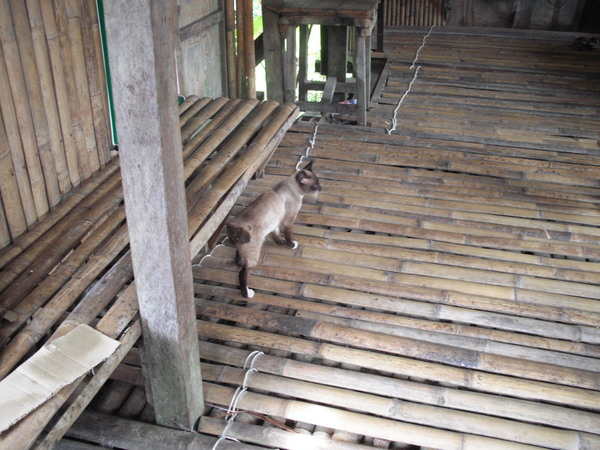
Or if you’re not comfortable with your feet rolling over the rounded bamboo, you can visit houses where the hosts have smashed the bamboo flat. Flat areas seem to attract cats, who are good at discerning comfortable spots.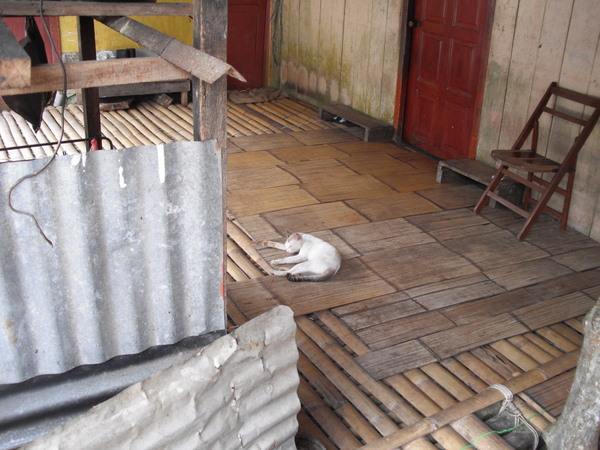
A longhouse has a long public area bordered by connected rooms with lockable doors. So the size of your longhouse is denoted by the number of doors. This seemed to be a 35-door longhouse. We peeked inside several doors as we went by, and they gave onto simple but comfortable rooms, with painted walls, linoleum floors, small gas stoves and TVs. This village has both electricity and running water, and a guesthouse where adventurous tourists can stay with a family. But one door gave onto a home that was maintained in the traditional fashion – except for the flush toilet in a little room off the back – and it had two levels. See if you can figure out how to get up these stairs: You need strong toes to get at the storage area in the loft.
You need strong toes to get at the storage area in the loft.
There is plenty of non-traditional architecture in the village, like this bridge connecting two different longhouses and creating a village: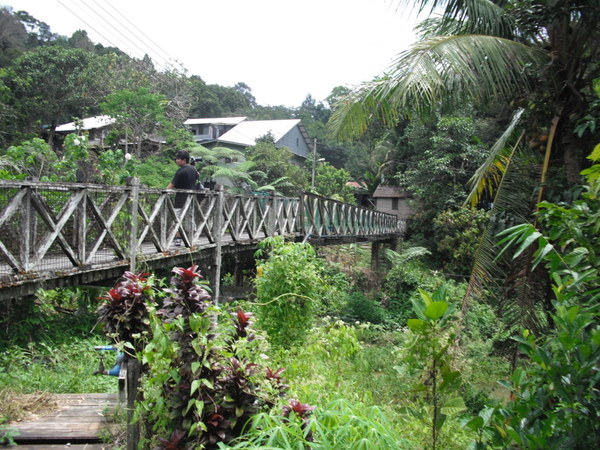
This cat is assisting in rice processing. The rice grains have dried out in the public area, on this hand-woven rattan mat, when it was open out in the sun. Now the grains are folded inside the mat, which has been moved to the sheltered area that acts as a covered hallway connecting the doors of the longhouse. If you walk on the mat it helps hull the rice. So having tourists clump about the place is helpful.